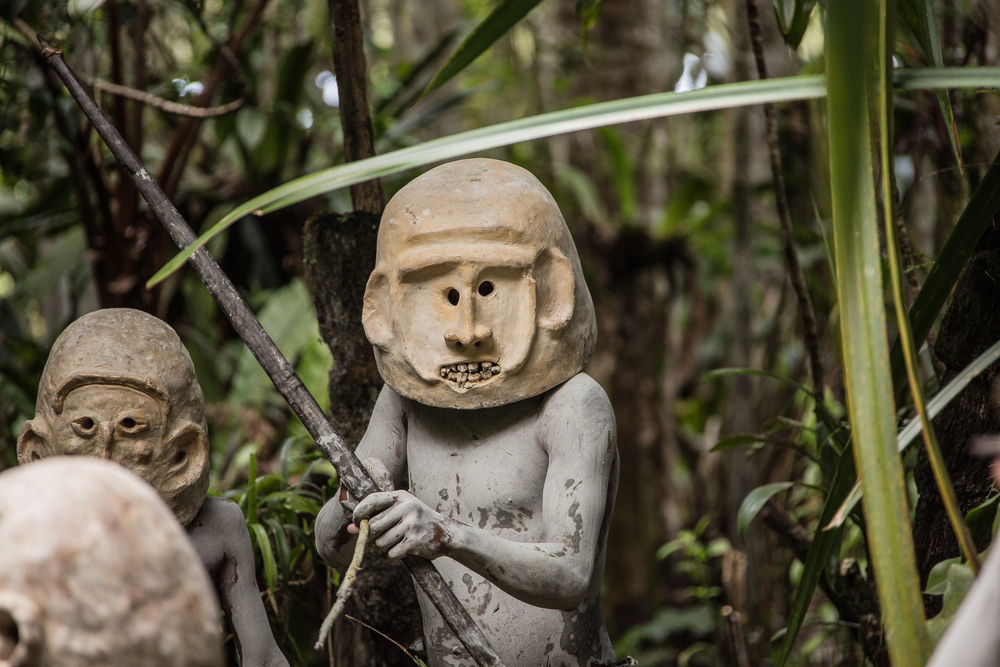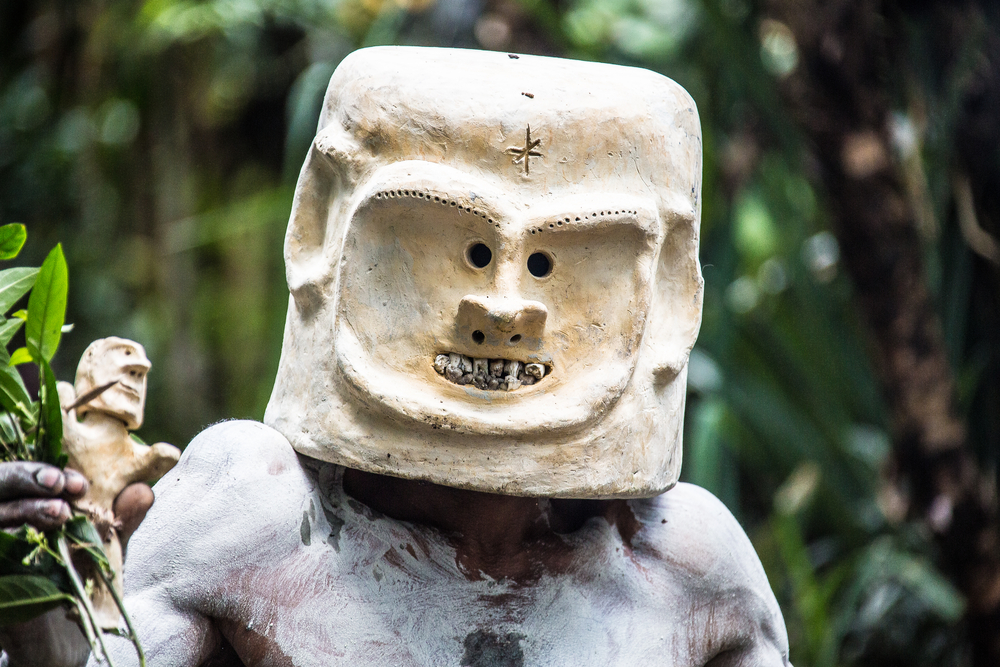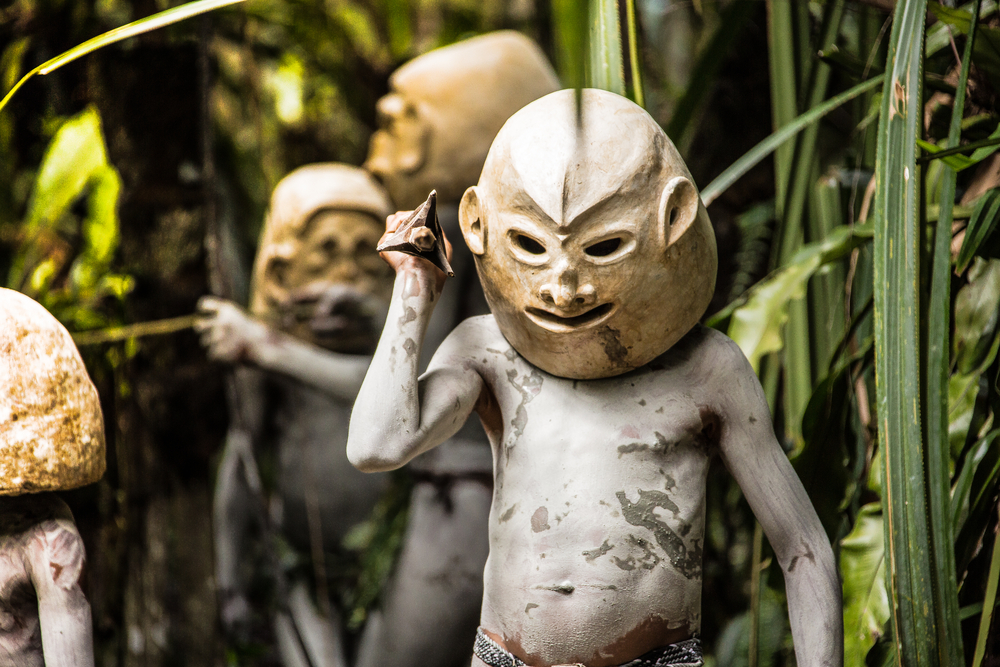The Asaro Mudmen of Papua New Guinea
Deep in the highlands of Papua New Guinea, the Asaro Mudmen have built a reputation for their haunting presence and unique warrior tradition. With their bodies painted in pale clay and their faces obscured by eerie, oversized masks, they appear more like spirits than men. But their striking appearance is not just for show—it is rooted in a centuries-old legend of survival, deception, and reclaiming lost land.
The legend of the Asaro Mudmen stretches back generations, a tale of survival, ingenuity, and fearsome deception. The story goes that after losing their lands in battle, the Asaro people were forced to retreat to the rugged Eastern Highlands. There, they plotted their return, knowing they could not win a direct fight. Instead, they crafted masks from sun-dried clay and painted their bodies in white mud, transforming themselves into ghostly figures. When they attacked at dawn, shrouded in mist, their enemies believed the spirits of the dead had risen. Overcome with terror, they fled without a fight, allowing the Asaro to reclaim their homeland.

Today, the Asaro Mudmen continue to captivate those who visit Papua New Guinea. Their performances, a blend of storytelling, ritual, and art, showcase the ingenuity of their ancestors. Each mask is uniquely designed, featuring exaggerated features—elongated ears, curved horns, or grotesque grins—all intended to intimidate. Some are adorned with pig tusks or shells, adding to their menacing appearance. Unlike many traditional Papua New Guinean masks, these are not worn with a strap but instead rest directly on the collarbone, making them surprisingly heavy.
The Mudmen’s ritual movements are slow and methodical, enhancing their ghost-like presence. Some carry clubs, reenacting ancient battle scenes, while others stretch their fingers with bamboo extensions, making their hands appear unnaturally long. The eerie silence that accompanies their performance adds to the tension, broken only by the occasional clash of a warrior’s club against the earth.
For travelers, the best place to witness this haunting display is at the annual Goroka Show, Papua New Guinea’s largest cultural festival. Held in September, the event brings together tribes from across the country, each showcasing their distinct traditions through dance, music, and elaborate body paint. The Asaro Mudmen are among the most anticipated performers, drawing crowds eager to see their legendary act up close. But for those seeking a more immersive experience, visiting the remote Asaro villages offers a deeper understanding of their customs and way of life.

The Asaro people live in small, self-sufficient communities nestled in the highlands. Visiting these villages is like stepping into another world, where traditions remain largely unchanged by time. Here, travelers can watch as artisans craft the iconic masks, a process that takes days to complete. Using heated pebbles and water, they mold the clay into striking designs before leaving them to dry in the sun. No two masks are the same, as each maker infuses their creation with personal touches—some grotesque, others almost comical.
Beyond the performances, visitors can learn about daily life in the highlands, from gardening in the fertile volcanic soil to preparing meals in earth ovens. The Asaro people are warm and welcoming, eager to share their heritage with those willing to listen. Sitting around a fire, hearing stories passed down through generations, one gains a deeper appreciation for the resilience of this remarkable culture.

For those looking to explore Papua New Guinea beyond its legends, a tour with Wild Frontiers offers an unforgettable adventure. This journey takes travelers deep into the country’s most remote corners, from the crocodile people of the Sepik River to the highland tribes of Simbai. Witnessing a vibrant tribal festival, such as the Goroka Show or Hagen Show, provides a rare opportunity to see Papua New Guinea’s diverse cultures come together in an explosion of color, music, and dance.
For an even more immersive experience, visitors can spend two days with the Kalam tribe in the Northern Highlands, staying in a remote village and experiencing traditional life firsthand. With expert local guides and a small group setting, Wild Frontiers ensures an authentic and enriching journey into one of the last frontiers of travel.







